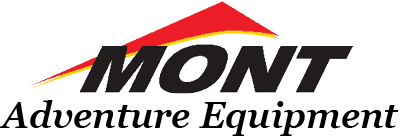Over the northern winter I’ve been working as a coach with the Australian Paralympic Alpine Team in Colorado. I came home just before Christmas and will head to Europe early February and then on to Sochi for the Paralympic Games.
It’s been a challenging role, working with some great people and athletes all committed to getting the best possible results at the Games. As much as I hate to admit it, it’s often the disability that increases the challenge. Like able-bodied athletes, those with disabilities have their own type of skiing, approach to training, the thing that makes them tick. There are varying skill levels, like any other sport, different goals and a million ways to get there. But then there are the disabilities. No two athletes are the same. The team training in Colorado included a vision-impaired skier and her sighted guide, a xxxx and a xxxxxx.
Then there’s my disability. It can be a tough day on the hill setting a course then standing on one leg for hours, changing position, standing again. It’s not really skiing. It’s just using a ski to get places. I don’t even take outriggers. My normal everyday walking crutches are enough. Most days I start with a pack containing all the day’s equipment, including some warm gear, a thermos of tea, a cordless drill and spare batteries, a foot-long drill bit, timing gear and video camera. It weighs about 15kg before I add a bundle of gates (15 to 20kg) and it starts to get pretty weighty, especially after a few hours lugging it around. Setting up for training can take a while and I work up quite a sweat. Then I get to stand still and watch training for a few hours and, in -26ºC or thereabouts, I rapidly start to freeze. I never make excuses but give me a day’s training as an athlete over a day on the hill as a coach any day!
Deciding what to wear is really important. Get it wrong and you could literally freeze to death or, on the flipside, be forced to carry the extra weight around. I’ve learned over many years but I still see people buying poor quality gear or choosing the wrong items to wear.
The polar freeze hit while we were in Colorado just before Christmas. We were training and competing in Vail and Copper Mountain (8150 feet and 10,000 feet respectively at the bases areas). It was one of the coldest weeks I have ever experienced. The coldest day dropped to a low of -24ºC max, closer to -40 overnight. We were on the hill at first light so you can imagine how bitterly cold it was. I hit my all-time layering record that day – eight layers on the top and five on the bottom. Standing and filming with one hand out of my glove for around 45 minutes was awful. I got some nip on my cheek. I decided then that female athletes are THE BEST! We had just three girls on the hill competing that day, and no Australian guys. In ski racing, the girls always go first and I gleefully skied down toward the warmth past coaches from other countries who would be standing there waiting for at least another hour until the guys were all done.
They all looked incredibly cold… and envious. Perhaps they weren’t wearing the right gear. Most days I start my layering with a Mont wool t-shirt and Mont long sleeve shirt, followed by a mid-weight wool top and fleece. Then over the top I put a down insulator and then a ski jacket. On very cold days I add another thicker down jacket and an extra mid layer. On the bottom I wear compression tights, wool thermals, fleece thermals, pyjama bottoms or track pants and ski pants over the top. All those spare left legs get tucked in together into the waistband of my ski pants for an extra few layers on my stump and other vital areas in that region!
One day I counted the number of Mont items I had with me in Colorado (it was cold outside and I had nothing better to do). I had 18 items of clothing, from undies right up to down jackets plus a big duffel bag, loads of other cool accessories and (my prized possession) a new sample Mojo 35 litre pack that I borrowed just to try out. It will be available later in the year?
Thanks Mont for your support and for keeping me warm.








